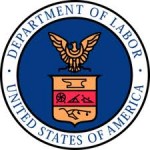- Home
- News
- Features
- Topics
- Labor
- Management
- Opinions/Blogs
- Tools & Resources
All About Job STRESS, Part 3: Job Stress Prevention Programs
Job Stress Prevention Programs: What Some Organizations Have Done
Job Stress Example 1 — A Small Service Organization. A department head in a small public service organization sensed an escalating level of tension and deteriorating morale among her staff.
Job dissatisfaction and health symptoms such as headaches also seemed to be on the rise.
Suspecting that stress was a developing problem in the department, she decided to hold a series of all-hands meetings with employees in the different work units of the department to explore this concern further.
These meetings could be best described as brainstorming sessions where individual employees freely expressed their views about the scope and sources of stress in their units and the measures that might be implemented to bring the problem under control.
Using the information collected in these meetings and in meetings with middle managers, she concluded that a serious problem probably existed and that quick action was needed.
Because she was relatively unfamiliar with the job stress field, she decided to seek help from a faculty member at a local university who taught courses on job stress and organizational behavior.
After reviewing the information collected at the brainstorming sessions, they decided it would be useful for the faculty member to conduct informal classes to raise awareness about job stress-its causes, effects, and prevention-for all workers and managers in the department.
It was also decided that a survey would be useful to obtain a more reliable picture of problematic job conditions and stress-related health complaints in the department.
The faculty member used information from the meetings with workers and managers to design the survey.
The faculty member was also involved in the distribution and collection of the anonymous survey to ensure that workers felt free to respond honestly and openly about what was bothering them.
He then helped the department head analyze and interpret the data.
Analysis of the survey data suggested that three types of job conditions were linked to stress complaints among workers:
- Unrealistic deadlines
- Low levels of support from supervisors
- Lack of worker involvement in decision-making
Having pinpointed these problems, the department head developed and prioritized a list of corrective measures for implementation.
Examples of these actions included (1) greater participation of employees in work scheduling to reduce unrealistic deadlines and (2) more frequent meetings between workers and managers to keep supervisors and workers updated on developing problems.
Example 2 — A Large Manufacturing Company. Although no widespread signs of stress were evident at work, the corporate medical director of a large manufacturing company thought it would be useful to establish a stress prevention program as a proactive measure.
As a first step he discussed this concept with senior management and with union leaders.
Together, they decided to organize a labor-management team to develop the program.
The team comprised representatives from labor, the medical/employee assistance department, the human resources department, and an outside human resources consulting firm.
The consulting firm provided technical advice about program design, implementation, and evaluation.
Financial resources for the team and program came from senior management, who made it clear that they supported this activity.
The team designed a two-part program.
One part focused on management practices and working conditions that could lead to stress.
The second part focused on individual health and well-being.
To begin the part of the program dealing with management practices and job conditions, the team worked with the consulting firm to add new questions about job stress to the company’s existing employee opinion survey.
The survey data were used by the team to identify stressful working conditions and to suggest changes at the work group and/or organizational level.
The employee health and well-being part of the program consisted of 12 weekly training sessions.
During these sessions, workers and managers learned about common sources and effects of stress at work, and about self- protection strategies such as relaxation methods and improved health behaviors.
The training sessions were offered during both work and non-work hours.
The team followed up with quarterly surveys of working conditions and stress symptoms to closely monitor the effectiveness of this two-part program.
These examples are based on adaptations of actual situations.
All About Job STRESS, Part 1
All About Job STRESS, Part 2
All About Job STRESS, Part 4
All About Job STRESS, Part 5
Dealing With Job Stress: A Handy Chart
For other examples of job stress interventions, see the Conditions of Work Digest, Vol. 11/2, pp. 139-275. This publication may be obtained by contacting the ILO Publications Center at P.O. Box 753, Waldorf, MD 20604 (Telephone: 301-638-3152). Or call NIOSH at 1-800-35-NIOSH.
Need Additional Information? More about NIOSH (/niosh/)
National Institute for Occupational Safety and Health 4676 Columbia Parkway Cincinnati, Ohio 45226-1998 NIOSH provides information and publications about a wide range of occupational hazards, including job stress at Job Stress (/niosh/topics/stress/) , call 1-800-CDC-INFO, or order online at http://wwwn.cdc.gov/pubs/niosh.aspx (http://wwwn.cdc.gov/pubs/niosh.aspx)
More Information about Job Stress:
The Encyclopaedia of Occupational Health and Safety, 4th Edition (ISBN 92-2-109203-8) contains a comprehensive summary of the latest scientific information about the causes and effects of job stress (see Vol. 1, Chapter 5, Mental Health; Vol. 2, Chapter 34, Psychosocial and Organizational Factors). International Labour Office (ILO) Publications Center) 301-638-3152 P.O. Box 753 Waldorf, MD 20604 Other Publications about Job Stress (/niosh/topics/stress/) Go to the NIOSH job stress internet site, or call the NIOSH 800 number (1-800-35-NIOSH). Location of a Psychologist or Consultant in Your Area American Psychological Association (APA) 1-800-964-2000 750 First St., N.E. fax: 202-336-5723 Washington, DC 20002-4242
State psychological associations maintain a listing of licensed psychologists who may be able to help with stress-related issues. Call the APA or your State psychological association for more information, or refer to the APA internet site (http://locator.apahelpcenter.org) (http://www.cdc.gov/Other/disclaimer.html) with this information .
Disclaimer
Mention of any company name or product does not constitute endorsement by the National Institute for Occupational Safety and Health.
This document is in the public domain and may be freely copied or reprinted.
View/Download Entire Document: STRESS…At Work (/niosh/docs/99-101/pdfs/99-101.pdf) [PDF – 612 KB]
http://wp.me/p2krob-1zd
List your business in the premium web directory for free This website is listed under Human Resources Directory




